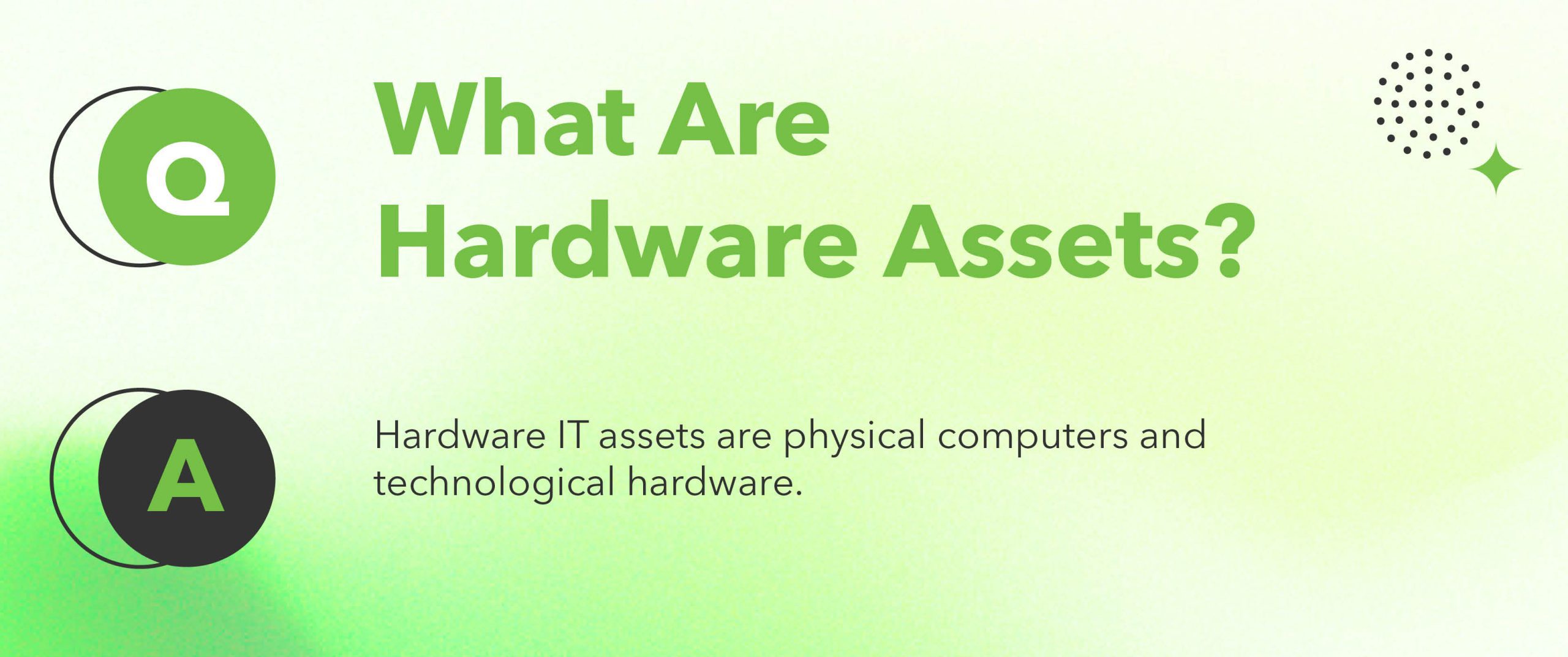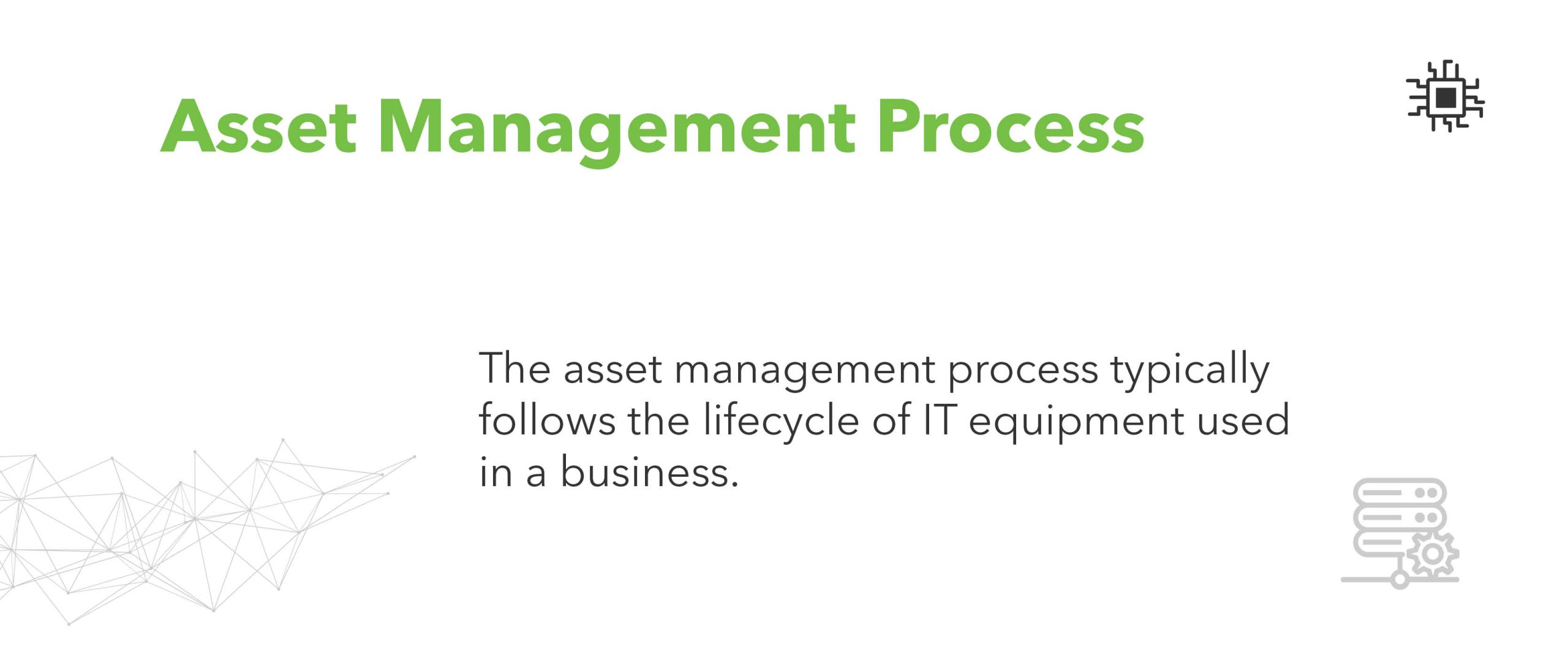Elevate Your Team with Multiply
Whether you are looking for solutions or need a team to aid your IT department, we’ve got a wide variety of services that can be tailored to your company needs. When you partner with Multiply Technology, you have a dedicated nimble team ready to improve any IT processes that may be stalling your company from greater growth.
IT Asset Management Services
ITAM as a Service – an extension of your team to scale YOUR IT operations.
Your turnkey solution to scale your IT operations. You don’t have to do the blocking and tackling of computer setup for onboarding and offboarding team members. Multiply’s services span the complete IT Lifecycle. From provisioning and shipping devices to new hires, reclaiming assets from terminated employees, and securely warehousing equipment, you can count on Multiply to help.
- Scale IT onboarding to meet rapid growth
- Rapid turnaround for late-adds or break/fix
- Retrieve laptops from departing employees
- Securely warehouse devices to pass audits


Focus on What Matters Most
As a lean IT org, you are uniquely situated to improve workflows, empower user experience, and lead cybersecurity efforts.
Helping You Get Your Life Back
Multiply frees up your team by operationalizing ITAM. You can finally take a vacation without being always on.


IT Lifecycle Management
Your Outsourced IT Depot to Manage the Full IT Asset Lifecycle.
Remote or Hybrid. Regardless of where you or your team are working, your devices are ready to deploy. Multiply is your one-stop shop for provisioning devices, retrieving laptops, coordinating IT repairs, managing your hardware refresh program, cutting over devices during a merger or acquisition, or disposing of end-of-life equipment. Consider us your force multiplier.
- Automate manual processes to enhance employee experience
- Blend physical hardware management and digital tracking
- Deliver a touchless provisioning and onboarding experience
- Visualize device inventory and asset assignments
IT Depot to Ship Anywhere
Extend your lean team with extra capacity and secure warehousing. Your assets, and data, are safe with us.
From High-Touch to Touchless
Put systems in place to automate complex IT workflows, enable scale as your workload grows, and deliver unprecedented user experience.
IT Procurement Services
Simplifying IT asset procurement and inventory management.
Take the complexity out of managing IT stock. Forecasting inventory can be challenging. Whether it’s balancing the tension of overcommitting budget to excess inventory or potential embarrassment of running out of gear for new hires, Multiply has you covered. Our proactive practices help you stay lean and relaxed, while staying ahead of the curve. No more weekly inventory meetings.
- Real-Time Inventory and Tracking
- Securely Store Inventory at Multiply’s IT Depot
- Just-in-Time Inventory Management
- Consistent and Transparent Ordering + Restocking


Prepare for Anything
Adjust to the demands of your business, whether its rapid hiring and growth, or leveraging redeployable stock for cost savings.
Standardize to Scale
Establishing consistent technology standards for your company various departments provides predictability and informs hiring trends.


IT Onboarding
Deliver Devices Flawlessly to Enable Day 1 Readiness.
Take your employees on a journey with their technology. Your IT team will be heroes to your HR counterparts. Together, you will make an unforgettable first impression as new team members acclimate to their new environment. Multiply is your guide to proactively implementing your IT onboarding process.
- Make employees feel valued and set up for success
- Empower employee productivity through smooth systems access
- Avoid the scramble of setting up new hires last minute
- Combine welcome swag and peripherals in a single onboarding kit
From Selection to Set Up
We handle it all from guiding employees on device selection, shipping with plenty of lead time, and communicating with the end user.
Proactive and Repeatable
Establish device standards, manage onboarding timelines, and make your employees feel like they are royalty on Day 1.
Hardware Asset Management
End-to-end services to empower your IT systems at scale.
Punch above your weight class as an IT org. Unlock your ability to communicate proactively with employees, deliver rockstar service, and keep your day-to-day operations in check. Increase the time your spend on strategic IT initiatives that you’re uniquely situated to achieve. Offload your refresh program, inventory management, and hands-on work to Multiply.
- Eliminate unnecessary spend across the IT Asset Management cost center
- Deliver excellent user experience and IT happiness
- Build trust with clear executive reporting
- Define consistent device refresh lifecycle


Manage Hardware SUSTAINABLY
Don’t let the workload overtake you, but also yes, the environment. Ensure you have a proactive plan from refreshing to retiring hardware intentionally.
Scaling Starts Now
Maximize your IT lifecycle and limit IT spend by turning over the steady state of IT operations and laptop management to Multiply.


IT Asset Tracking + Laptop Auditing
Establish visibility into where an asset is throughout its lifecycle.
You can’t secure what you don’t know you have. Cybersecurity and monitoring your environment is more complex in our remote world. Multiply can unify your physical hardware with your digital records. Multiply establishes trust with transparent audits to empower your governance and compliance programs, and mitigate shadow IT.
- Survey your employee base to verify device assignments
- Remediate records that are not accurate
- Reclaim unneeded or outstanding equipment
- Verify records match with platform of record
User-led Audits
Save your IT staff from hunting down computers and equipment with our real time auditing and remediation tools.
Data-Driven Decisions
Eliminate the guesswork. Ensure device records are accurate to inform executive decision making based on real-time data.
IT Asset Recovery and Laptop Retrieval
Streamline the cumbersome device reclamation process from employees.
Time is money. Swiftly retrieving laptops from terminated or departing employees means recovering value. Multiply helps you save money and prioritize secure endpoint management by reclaiming hardware. Devices that have life left can be redeployed and used as backstock.
- Maximize the useful life of your IT assets
- Automate the employee offboarding process
- Recover equipment from remote employees
- Build redeployable stock to drive cost savings


No hassle laptop retrieval
Don’t let your assets walk with your departing employees. Let us reclaim and put computers back in inventory for deployment.
Keep your environment secure
Top-tier cybersecurity initiatives prioritize access control through endpoint security. Don’t let asset recovery be your missing piece.


IT Asset Disposition
Retire end-of-life assets securely with complete confidence.
Data security is our #1 priority. Securely wipe data from devices with industry-leading erasure technology. Maximize the useful life of your IT assets and offset costs. Prioritize your compliance and cybersecurity programs through our white-glove approach. Leverage Multiply as a trusted ITAD partner with more than a decade of experience to bring you peace of mind.
- Secure erasure methodology using industry-leading software
- Serialized asset reporting and certificates of destruction
- Recover maximum value from EOL devices
- Ensure devices don’t leave with your employees
Put EOL on Autopilot
Don’t let your IT closet get overrun with End-of-Life and unused devices. Maximize value by disposing of gear at the best time.
Minimize Strain on IT
Your IT team is being pulled in many directions… retiring old gear is critically important but likely not your primary focus.
Unlock Your IT Org’s Force Multiplier
IT Asset Management
IT asset management (ITAM) is essential to keeping IT equipment up to date and your business running smoothly. ITAM helps with all the processes of acquiring, maintaining, repurposing, and disposing of the technology used in a business.
This article will provide a comprehensive overview of how ITAM works within a business. We’ll cover:
Managing different types of IT assets
The ITAM process
Roles and responsibilities for IT asset management
Examples of how it is used in a business environment
There’s a lot of information to cover with each of these topics. You’ll want to stick around until the end to get all the details.
Hardware Asset Management
One of the frequent asset management needs in businesses is hardware assets. Your hardware assets are likely a big part of daily operations, and their lifecycle should be managed accordingly.


What Are Hardware Assets?
Hardware IT assets are physical computers and technological hardware. Common hardware assets are:
- Desktop computers/laptops
- Tablets
- Smartphones
- Motherboards
- SIM cards
- Hard drives
Each of these hardware assets and more within a business need to be maintained well. As their asset lifecycle advances, replacing them on time and getting good value for computer equipment is important. The proper processes for this help a business continue running smoothly and ensure you only spend money on the most necessary equipment.
Having IT partners like Multiply’s team of consultants can help streamline the IT asset management process for success. It’s worth it to have the best practices in place for managing hardware and other essential assets in a business.
What Are the Other Types of IT Assets?
There are several other types of assets that businesses use regularly. The most common are:
- Software assets: Some examples IT asset management software include accounting software, picture and video editing software, cybersecurity software, etc.
- Peripheral assets: Computer monitors, mice, keyboards, and projectors.
- Cloud-based assets: Spreadsheets, SaaS programs, and PaaS programs.
- Fixed assets: Desks, networking cabinets, and server room AC units.
- Data assets: Output files, databases, and data-containing documents.
One of the important things to keep in mind here is that your IT hardware contributes to the ability to use many of these other assets effectively. That means managing your hardware-based assets should be a number one priority. If you’re looking for the right solution, Multiply can help you manage all your hardware assets effectively.
How Does Managing Hardware Differ from Other Types of IT Assets?
Going back to the category of hardware assets, you may wonder how managing them differs from other types of assets.
The main thing that makes them different is the management process for hardware can involve more physical repairs or procedures if issues occur.
It’s essential to stay on top of the maintenance and functionality of hardware since it is needed to access other types of assets. If an accountant’s computer breaks down, they won’t be able to access the accounting software needed to do their job. So hardware malfunctions can lead to a stack of other issues within business operations.
IT teams will want to stay on top of these assets with regular maintenance and audits, which can be time consuming and impact their ability to complete other tasks. Multiply has successfully completed local and global hardware audits for companies like Salesforce and KAR Auction Services, and is ready to support your team in this process.


Asset Management Process
Along with managing different types of assets, you’ll want to know what the entire asset lifecycle management process looks like. The asset management process typically follows the lifecycle of IT equipment used in a business. This process goes through the following steps:
- Taking inventory of all assets on hand
- Acquisition of new assets as needed
- Deployment of newly acquired assets
- Day-to-day management and maintenance of assets
- Disposition of old assets once they are no longer needed
Each of these steps involves its own processes, which we’ll cover in the following sections.
IT Asset Inventory
An inventory system is needed to properly track the lifecycle and maintenance of all assets on hand. It’ll help keep the rest of the process organized.
Many businesses can feel overwhelmed by this part if they haven’t been keeping accurate track of the assets they’ve been using. That’s why bringing in a team of professionals to help with this can be so beneficial.
IT teams can use asset discovery software to help identify many assets that are being used in a business. However, some fixed or hardware assets may need to be accounted for manually. Trained professionals in ITAM can help conduct the asset identification process smoothly since they usually have a good idea of the common assets used in business settings.
Once all assets are accounted for, a system should be implemented to regularly check up on the various assets in use. This is typically a system of auditing current assets and tracking lifecycles to see when old assets should be replaced and new assets should be purchased.
IT Asset Disposition
All types of assets will see a time when they become old, outdated, or no longer function how they’re supposed to. This is where the disposition process of ITAM comes into play. Disposition involves selling or disposing of old assets on hand.
One of the goals of ITAM is to help businesses get the most value for the asset they own. A significant portion of that comes down to managing the disposition process effectively. Many assets hold onto some value as they age, so they can still be sold to get money back for them.
IT professionals can help streamline that process and get the most value back from old assets. It’ll help make it a bit easier to spend money investing in new equipment for your company.
If IT assets can’t be sold, your IT team can ensure they are disposed of following proper regulations and procedures, and that all your company data is destroyed in the process. You can’t simply throw out IT equipment like other physical objects. There’s a process to make sure this equipment is recycled correctly and in an environmentally-friendly manner.
IT Asset Deployment
Once assets are purchased, they need to be set up correctly for effective use within the structure of your business. IT teams should have a process for moving old assets out of daily operations and efficiently replacing them with new ones.
Trained professionals will know how to quickly set up new equipment and ensure it functions correctly before it is put to use. The right process limits malfunctions and headaches that can happen when new equipment is implemented.
IT Asset Acquisition
When new assets need to be purchased, that will fall under the acquisition portion of the ITAM process. Purchasing assets can sound easy, but there’s actually a big decision-making process that must go into it. After all, it is a way of investing in your company’s success. It should be given full thought and planning to ensure you spend money in the most efficient manner.
IT teams can help account for how many and what type of assets are needed within the business. They can then research various vendors and aim to find assets at the most economical price for their quality.
Working with a team of professionals who know how to do this right will ensure you purchase assets within your budget that maintain their value for the long term. They also can have relationships with vendors and other sources to make sure you are receiving the best possible price and best quality hardware.
Day-to-Day Maintenance
Once assets are set up, the process doesn’t end there. No piece of IT equipment will always function perfectly. That’s why daily maintenance processes and check-ins are necessary to keep things running smoothly.
Frequently checking up on asset functionality helps prevent major issues that can commonly occur in businesses. We’ve all experienced those hectic times when things stopped working how they should. An IT team that knows how to put the right processes in place will help immensely with preventing those moments or knowing exactly what to do if they occur.
At Multiply, we use a system of continuous self-auditing to collect the data needed to ensure all of your company’s assets are in working shape and head off any major repairs or updates that could impact business functions in the future.
3 Main Deliverables of IT Asset Management
As mentioned, the main deliverable of ITAM is getting the most value possible out of the assets you invest in for your business. The other two deliverables would be organizing data and information about IT assets and ensuring their reliability and functionality. We’ll break each of these deliverables down in more detail below.
- Getting the most value out of IT assets: You’ll see this deliverable in a handful of places throughout a business. ITAM will help you buy assets for the most economical price, extend their lifecycle through proper maintenance, and ensure you can sell them for enough value when you dispose of them. It lowers expenses on technology significantly.
- Organizing data and information: This is the process of creating an inventory system and maintenance schedule. An IT team responsible for asset management will deliver you a full system that is streamlined for success. It eliminates a lot of the frustration and confusion that is common in working with IT assets.
- Ensuring reliability and functionality: This goes along with planning the daily aspects of maintaining IT equipment and deploying it successfully. IT teams will ensure things stay up to date and function correctly when set up. Having a process for this ensures your business continues running smoothly.
With these three deliverables, you can see how ITAM brings value to a business. It’s worth investing in these processes since it helps lower significant costs with IT equipment and will increase the performance and efficiency of other daily business operations.
IT Asset Management Roles and Responsibilities Across the Asset Lifecycle
With the common processes of ITAM, some specific roles and responsibilities go along with it to make everything possible. The typical roles and responsibilities of an ITAM team are:
- Set and communicate the policies for managing asset acquisition, disposition, repurposing, and maintenance. The proper policy and procedures keep everything else running smoothly.
- Coordinate governance, processes, and reporting. This establishes who is in charge of various aspects and the procedures for reporting and conducting elements of the ITAM system.
- Identify, assess, and quantify risks. There can be risks associated with deploying and replacing IT equipment. IT teams should identify them and use best practices to mitigate any potential issues that could occur.
- Track issues and when they are solved. If problems come up, they should be tracked from when they begin until the IT team can solve them. It helps ensure the timeliness of finding an appropriate solution.
- Provide evidence of compliance. This goes with both the IT team’s policies and specific regulations for managing IT assets in a business setting. All regulations should be complied with and documented in case the business ever needs to provide proof of following proper procedures.
A highly-trained IT team can ensure all these roles and responsibilities are implemented correctly.
How Much Does Software Asset Management Cost?
The cost of a software asset management system can vary depending on the needs of the business. Smaller businesses with fewer pieces of software will have lower costs associated with tracking and managing the process. However, larger companies with highly-complex systems will need to pay more for software management that covers all the necessary details. The cost of IT asset management software to track and manage IT assets can range from $300 to $250,000 per year. The low end would be very basic software asset tracking tools that are effective for small businesses, and the high end would involve large-scale solutions for enterprises and big corporations. Teams that track and manage software assets can also range in price. Many operate on a scale of $15 to $35 per month per software asset for small businesses. That price would increase to $50 to $150 per month per software asset for larger businesses with more complex systems. You’ll need a quote from the specific company you want to work with to get an accurate pricing estimate. While it can seem like a pricey investment, it is worth it to implement an ITAM system. It’ll save a lot of money in the long run by getting the best value from assets and improving the efficiency of company operations.Open-Source Asset Management Software
A common option many business decision-makers will wonder about is open-source software. You’ll commonly hear about cloud-hosted programs like Snipe IT and GLPI. While programs like Snipe IT are free, they aren’t always the best solution. One of the main issues with open-source solutions is there’s quite a learning curve with these programs. It can lead to overcomplicating the process even further and even mistracking the assets you have on hand. It’s especially difficult for managing hardware assets where more manual processes are needed to track and account for each physical piece of computer equipment your business uses.A Well-Rounded IT Team Will Help You Implement Asset Management Correctly
To get the best results from hardware asset management, you’ll want a team like Multiply on your side. Multiply can help your business put more streamlined solutions in place for tracking and maintaining computer hardware. Our solutions will be easier to manage than what you get with open-source software. If you’re looking over different options for asset management, we’ll help you figure out the best solutions for your needs.What Is an Example of IT Asset Management?
To better understand how asset management works, we’ll outline some examples for you.
Example #1 – Upgrading Laptops
Let’s say a company wants to upgrade its marketing team’s computers since their current technology is becoming outdated. There are 20 members of the company’s marketing team who will each need to have their old laptop replaced with a new model.
When a company has an asset management team, IT professionals can get to work searching for the right model and type of laptop to buy based on the company’s budget for new equipment. Alongside that, they can also start negotiating with vendors to sell the old laptops the marketing team has been using.
Once the right model of laptops have been found and purchased, the IT team can replace the old laptops and set up the new ones for the marketing team. They can work with individual members of the company’s marketing team who are receiving new laptops to get started using them effectively.
Once new laptops are deployed and working correctly, they can go into the IT team’s routine maintenance schedule. The IT team will then check up on the laptops periodically to ensure they are performing well and help with any issues on a daily basis.
After replacing the old laptops, they will be sold or disposed of. If they’re sold, the asset management team will ensure the company gets the best possible value for them. If any can’t be sold, they’ll be disposed of following regulations for recycling technological items.
Example #2 – Device Compliance
For another example, let’s say a business leader, Andrea, facilitates quarterly audits of IT devices for her global company. Regular audits of IT devices are important to ensure they are all tracked, functioning properly, and being used following proper protocols within the company.
Auditing IT assets across a global company can quickly get overwhelming. Someone in Andrea’s position would feel overwhelmed trying to manage all the aspects of locating assets in the company’s operation centers around the world while also managing other tasks she has to do daily.
Fortunately for Andrea, Multiply was able to help. Upon partnering with Multiply, a well-rounded plan was put into place to make the auditing process much easier. It consisted of:
- Creating a detailed scheduling system across auditors and technicians.
- Replacing difficult-to-understand spreadsheets with real-time takeaways from audit findings that can be implemented right away to improve business processes.
- Creating automated systems for device remediation and reporting.
Overall, partnering with Multiply to help run this audit took a lot of work and frustration off of Andrea’s plate. Multiply helped obtain accurate data and took it a step further by portraying findings in a way that was much easier to understand. This had a widespread positive effect on business operations as a whole.
Example #3 – Merging Technology
A business leader, Ashley, is in charge of a big company merger. During this process, she has to manage all the different IT equipment that is coming in from the company they acquired. A detailed process is needed to track it all and merge different types of technology in business operations.
With so much to think about and deal with, this can make someone in Ashley’s position feel completely overwhelmed. That’s where Multiply comes in and can help facilitate this process.
Upon partnering with Multiply, a new system is put into place to make merging technology much easier. That system involved:
- Creating a simplified data gathering and forecasting system with automation and auditing tools.
- Multiply managing communication between teams and implementing a new system that helps everyone stay on the same page.
- Using detailed asset management tools created by Multiply to implement a scalable process for asset delivery and recovery.
With the help of Multiply, managing IT equipment and integrating two different companies in this merger is much easier. This process helps Ashley feel more confident in her decisions and takes the weight off her shoulders by partnering with Multiply to manage the workload.
Importance of Asset Management
As you can see in the above example, a lot goes into managing just one type of asset that a company uses. Now think about all the pieces of technology throughout your company that would require the same level of management and care.
A team of professionals who can handle the ITAM process for you effectively is sure to benefit your company… If you’re looking for help with IT asset management, we are here to help!
How Multiply’s IT Asset Management Services and Solutions Can Help
Multiply is a team of IT consultants and senior service technicians that partner with companies like yours to help with IT asset lifecycle and data service management. Multiply’s goal is to help companies create streamlined solutions for managing their IT processes and bridge connections between the teams involved. By working with us, you can rest easy knowing our goal is to make your teams’ lives that much easier.
To learn more about how Multiply can help your team with IT asset management solutions, contact us today!
